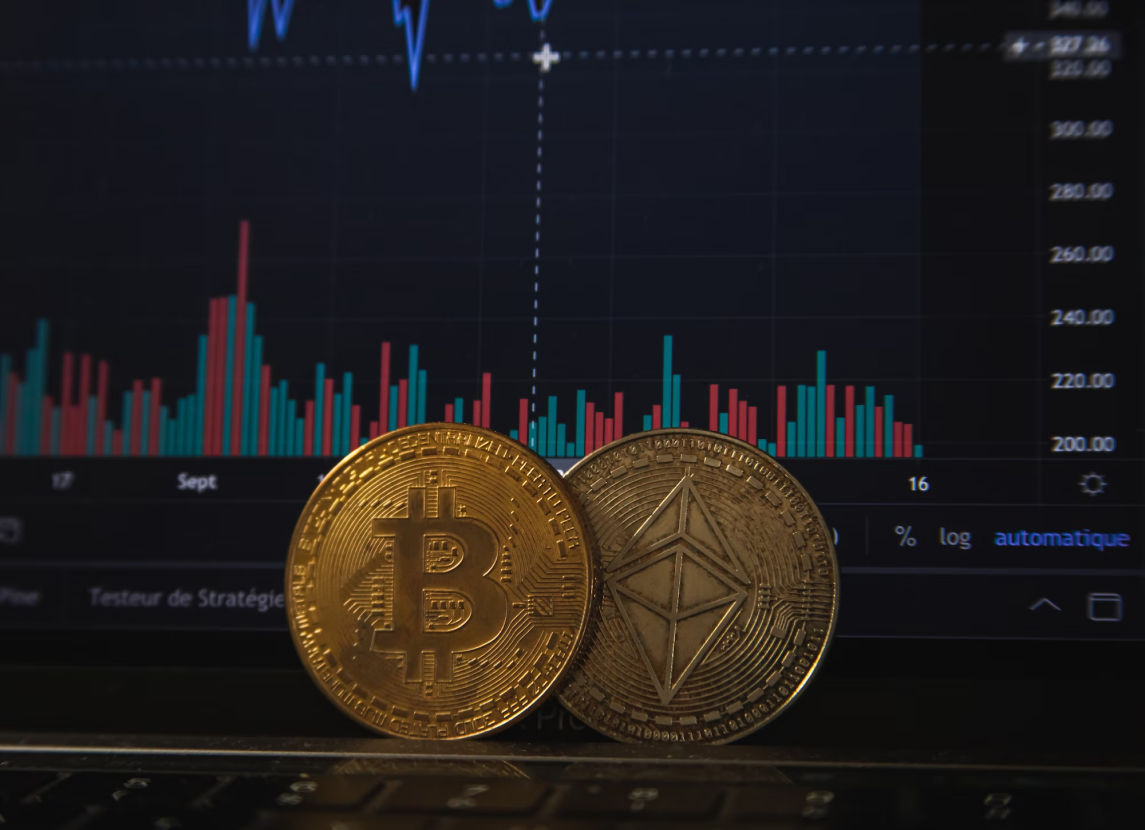China’s dollar deposit rate cuts could drive investors toward crypto as a hedge

Share:
China’s central bank has instructed key commercial banks to cut U.S. dollar deposit rates, which could push investors toward alternative assets like cryptocurrency.
The People’s Bank of China (PBOC) wants to discourage investors from hoarding the dollar to boost confidence in its currency as capital outflows rise.
China moves to reduce dollar holdings amid yuan weakness
Over the past year, Chinese investors have hoarded more dollars due to higher U.S. interest rates and consistent doubts over China’s slow economy, which seems to be worsening. As a result, the PBOC pushed for lower dollar deposit rates to stabilize the yuan and manage the rising capital outflows.
Official data indicates that onshore foreign exchange deposits hit $892.4 billion in January 2024, the highest since April 2023. Among these stats, household dollar deposits rose $18% year-over-year to $146.1 billion, while corporate dollar holding reached $451.9 billion.
These high-dollar deposits have lowered the conversion ratio (how willing businesses and individuals are to switch dollars back to yuan), resulting in the largest record of foreign exchange sales to clients since July 2023 and raising demand for the U.S. dollar.
For example, the Bank of East Asia will reduce its rate on one-year dollar deposits in sums greater than $20,000 from 4.4% to 3.4%, and the Bank of Nanjing will lower its three-month dollar deposit rate on sums greater than $3,000 from 4.3% to 2.1%. Other state-owned banks will follow in the coming weeks.
Chinese regulators have also warned about the growing tendency among investors to hoard dollars, arguing that risk-taking speculation could trigger outsized capital outflow and lead to even more depreciation of the yuan. Those lower deposit rates are meant to make dollar savings relatively less attractive and prod investors back into yuan-denominated assets.
Yuan faces pressure from global economic factors
The interest rate spread between China and the U.S. is wider now than ever, attracting more Chinese investors to the dollar. Thus, the Chinese yuan must compete with high-yielding U.S. Federal Reserve interest rates, giving dollar deposits about 4.5% returns, while yuan deposits yield less than 1%.
Market analysts report that China’s capital controls have limited large-scale capital flight, and as the dollar rises, the long-term stability of the yuan remains uncertain.
Trump’s proposed tariffs on Chinese imports also put a lot of pressure on the yuan. The 10% duty on Chinese goods starting March 4 caused market jitters, causing a sell-off in Bitcoin, which fell over 5% to $79,125 (the lowest science November 2023). Ether also tumbled more than 5% to $2,099 (a 13-month low), while the Australian dollar dropped 0.4%, reaching a three-week low.
Investors looking for alternative options amid rate cuts
As dollar deposits fall, investors explore alternative assets to hedge against possible inflation, and cryptocurrencies like Bitcoin stand out. Because of its decentralized nature and limited supply, Bitcoin is seen as “digital gold,” making it a good hedge against inflation and the depreciating yuan.
The weaker yuan and reduced incentives to hold dollar deposits increased demand for Bitcoin. Before China’s crackdown on cryptocurrency trading in 2021, China was one of the biggest markets for the adoption of Bitcoin, with many investors using it to circumvent capital controls and protect their wealth against inflation.
Chinese investors seeking a less volatile currency helped boost demand for stablecoins such as Tether (USDT) and USD Coin (USDC), allowing them to keep their access to USD while avoiding the country’s banking system.
Despite China’s regulatory crackdown on cryptocurrency trading, the demand for digital assets remains high. Offshore exchanges and decentralized finance (DeFi) platforms allow Chinese investors to buy and trade stablecoins despite the tight restrictions.
If the yuan weakens further and global economic conditions remain unstable, there will be an explosive demand for cryptocurrency as a hedge against inflation, currency devaluation, and geopolitical uncertainty. Still, Chinese arthritis may force stricter capital controls or increase regulatory oversight to prevent large-scale outflows into digital assets.
China’s financial system remains fragile due to the ongoing U.S.-China trade tensions, a broadening yield gap, and domestic economic concerns. The coming months will show whether PBOC’s measures to lower U.S. deposit rates will successfully redirect capital into the yuan or if investors will continue to hedge using alternative assets.
Cryptopolitan Academy: Tired of market swings? Learn how DeFi can help you build steady passive income. Register Now
China’s dollar deposit rate cuts could drive investors toward crypto as a hedge

Share:
China’s central bank has instructed key commercial banks to cut U.S. dollar deposit rates, which could push investors toward alternative assets like cryptocurrency.
The People’s Bank of China (PBOC) wants to discourage investors from hoarding the dollar to boost confidence in its currency as capital outflows rise.
China moves to reduce dollar holdings amid yuan weakness
Over the past year, Chinese investors have hoarded more dollars due to higher U.S. interest rates and consistent doubts over China’s slow economy, which seems to be worsening. As a result, the PBOC pushed for lower dollar deposit rates to stabilize the yuan and manage the rising capital outflows.
Official data indicates that onshore foreign exchange deposits hit $892.4 billion in January 2024, the highest since April 2023. Among these stats, household dollar deposits rose $18% year-over-year to $146.1 billion, while corporate dollar holding reached $451.9 billion.
These high-dollar deposits have lowered the conversion ratio (how willing businesses and individuals are to switch dollars back to yuan), resulting in the largest record of foreign exchange sales to clients since July 2023 and raising demand for the U.S. dollar.
For example, the Bank of East Asia will reduce its rate on one-year dollar deposits in sums greater than $20,000 from 4.4% to 3.4%, and the Bank of Nanjing will lower its three-month dollar deposit rate on sums greater than $3,000 from 4.3% to 2.1%. Other state-owned banks will follow in the coming weeks.
Chinese regulators have also warned about the growing tendency among investors to hoard dollars, arguing that risk-taking speculation could trigger outsized capital outflow and lead to even more depreciation of the yuan. Those lower deposit rates are meant to make dollar savings relatively less attractive and prod investors back into yuan-denominated assets.
Yuan faces pressure from global economic factors
The interest rate spread between China and the U.S. is wider now than ever, attracting more Chinese investors to the dollar. Thus, the Chinese yuan must compete with high-yielding U.S. Federal Reserve interest rates, giving dollar deposits about 4.5% returns, while yuan deposits yield less than 1%.
Market analysts report that China’s capital controls have limited large-scale capital flight, and as the dollar rises, the long-term stability of the yuan remains uncertain.
Trump’s proposed tariffs on Chinese imports also put a lot of pressure on the yuan. The 10% duty on Chinese goods starting March 4 caused market jitters, causing a sell-off in Bitcoin, which fell over 5% to $79,125 (the lowest science November 2023). Ether also tumbled more than 5% to $2,099 (a 13-month low), while the Australian dollar dropped 0.4%, reaching a three-week low.
Investors looking for alternative options amid rate cuts
As dollar deposits fall, investors explore alternative assets to hedge against possible inflation, and cryptocurrencies like Bitcoin stand out. Because of its decentralized nature and limited supply, Bitcoin is seen as “digital gold,” making it a good hedge against inflation and the depreciating yuan.
The weaker yuan and reduced incentives to hold dollar deposits increased demand for Bitcoin. Before China’s crackdown on cryptocurrency trading in 2021, China was one of the biggest markets for the adoption of Bitcoin, with many investors using it to circumvent capital controls and protect their wealth against inflation.
Chinese investors seeking a less volatile currency helped boost demand for stablecoins such as Tether (USDT) and USD Coin (USDC), allowing them to keep their access to USD while avoiding the country’s banking system.
Despite China’s regulatory crackdown on cryptocurrency trading, the demand for digital assets remains high. Offshore exchanges and decentralized finance (DeFi) platforms allow Chinese investors to buy and trade stablecoins despite the tight restrictions.
If the yuan weakens further and global economic conditions remain unstable, there will be an explosive demand for cryptocurrency as a hedge against inflation, currency devaluation, and geopolitical uncertainty. Still, Chinese arthritis may force stricter capital controls or increase regulatory oversight to prevent large-scale outflows into digital assets.
China’s financial system remains fragile due to the ongoing U.S.-China trade tensions, a broadening yield gap, and domestic economic concerns. The coming months will show whether PBOC’s measures to lower U.S. deposit rates will successfully redirect capital into the yuan or if investors will continue to hedge using alternative assets.
Cryptopolitan Academy: Tired of market swings? Learn how DeFi can help you build steady passive income. Register Now











